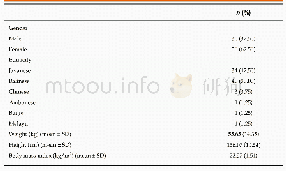《Table 1–General description of the sampling events.》
 提示:宽带有限、当前游客访问压缩模式
提示:宽带有限、当前游客访问压缩模式
本系列图表出处文件名:随高清版一同展现
《One-year survey of opportunistic premise plumbing pathogens and free-living amoebae in the tap-water of one northern city of China》
The locations with asterisk(*)represented the taps of high-use-frequency.
All the collected tap water samples were cold water sampled at the same time of day during normal operation and usage.A total of 11 sampling sites dispersed across the city were monitored(Table 1).Four sampling events(Autumn:Sep,2015;Winter:Dec,2015;Spring:Apr,2016;Summer:Jul,2016)were performed.The taps were wiped with 75%ethanol and run for15 sec prior to water collection(Donohue et al.,2015).At each tap,3 L of water was sampled in three 1-L sterile glass media bottles,respectively.1 L of water was used for the testing of water quality parameters and the other 2 L of water(bottles containing sterile sodium thiosulfate)was used for DNA extraction(Appendix A Fig.S2).All the water samples for DNA extraction were stored at4°C and transported to the lab and processed within 6–12 hr.
| 图表编号 | XD0033515200 严禁用于非法目的 |
|---|---|
| 绘制时间 | 2019.03.15 |
| 作者 | Lizhong Liu、Xueci Xing、Chun Hu、Haibo Wang |
| 绘制单位 | Key Laboratory of Drinking Water Science and Technology, Research Center for Eco-Environmental Sciences, Chinese Academy of Sciences、University of Chinese Academy of Sciences、Key Laboratory of Drinking Water Science and Technology, Research Center for Eco |
| 更多格式 | 高清、无水印(增值服务) |





